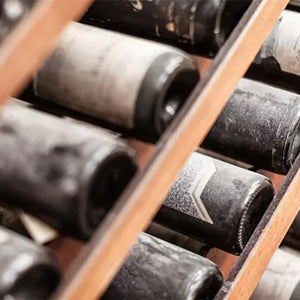
How to Taste Wine Like a Pro
If you’re interested in learning more about wine, sipping with intention is a great place to start. Curious about how to taste wine like the pros? It’s more simple than you think. Follow the five simple steps below and you’ll be on your way to sipping like a sommelier in no time.
Use Solid Glassware
When it comes to tasting wine like a pro, grabbing a great glass to pour your wine into is a great place to start – and while many will bypass this first step, we find it to be crucial. Well-made glassware both feels better in the hand (and therefore provides an overall more aesthetically pleasing tasting experience), as well as is designed to help pronounce and showcase aromas and flavors in the best way possible. Cheap glassware not only feels uncomfortable to hold, but it also won’t convey aromatics and flavors as precisely as a well-made stem. Though worry not – not all great glassware is expensive. For some of our go-to picks, click the link below.
Add a Little Air
Beyond looking baller, there’s a reason why the pros swirl wine before tasting it, and it all comes down to oxygen. By swirling your glass, oxygen is introduced to the wine, which chemically combines with the wine on a molecular level and “opens” it up – in other words, makes it more aromatic. Giving your glass a swirl prior to tasting will allow all of the juice’s unique nuances and aromatics to exude from the glass. Just be sure not to take too deep of an inhale post swirling, as you’ll likely get a nose full of ethanol.
Follow the ‘5 S’ Rule
Most wine professionals follow the simple ‘5 S’ rule for tasting wine, not just because it’s easy to remember, but also due to how wildly effective it is. Check out a breakdown of the steps below.
The ‘5 S’ Tasting Method
- See - Take a look at the wine in your glass without holding it in front of you. Instead, hold the glass horizontally over a white background (paper, tablecloth, etc.) and look down through the “top” (in this case, the side) of the glass. This will allow you to properly assess the wine’s color without distorting it.
- Swirl - We hit this above, but we’ll hammer it home again – swirling your wine introduces oxygen to the juice, which allows its aromas to become more pronounced… which is great for the next step.
- Smell - Stick your nose as deep into the glass as possible and inhale. Observe the aromas coming from the wine, both fruit and non-fruit (earth, spice, etc.) included.
- Sip - Once you’ve registered the aromas of the wine, take a sip – and if you can, purse your lips into a circular position (as if you had them around a straw) and inhale some air. This will bring the flavors up into the back of your throat and nasal cavity, opening them up even more than if just simply sipping. This may take a few practices, so try it over the sink first! Observe the flavors you taste, compare them to the wine’s aromas, and eventually spit or savor.
- Spit / Savor - We’ll break this one down in the next tip!
Spit, Then Savor
After sipping, both spitting and savoring (that is, swallowing the wine) offer key insights to a wine. Spitting will allow you to assess the wine’s flavors and structure without becoming intoxicated, whereas savoring / swallowing will give you a better look into how the wine finishes. Is it persistent? Dry? Acid-driven? These are all common adjectives used to describe a wine’s finish.
Think & Enjoy
Last but not least, take a moment to think about the wine you just tasted. Beyond simply enjoying or not enjoying it, what did you take away about its structure, flavor profile, and finish? How does it compare to other wines produced from the same grape / region / producer? For those really looking to sharpen their tasting skills, we recommend writing these observations down for both memory and vocabulary building’s sake – and if you love the wine you just tasted, by all means, continue to throw back some more!




